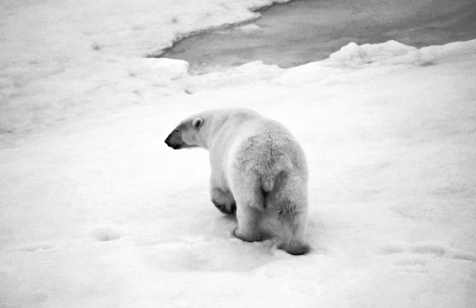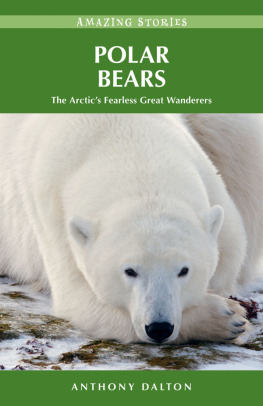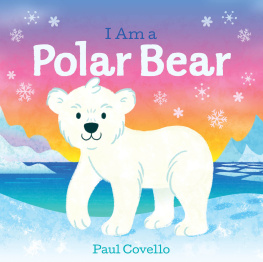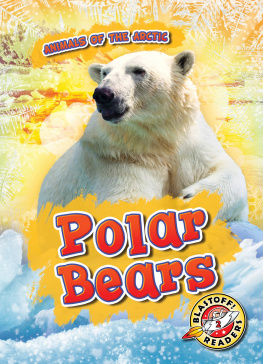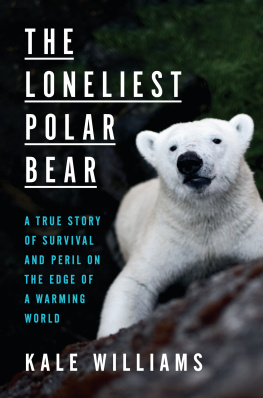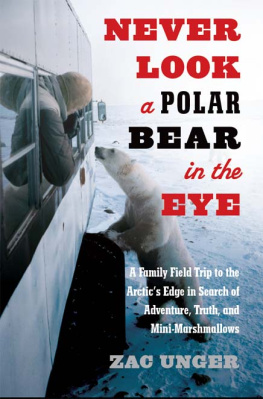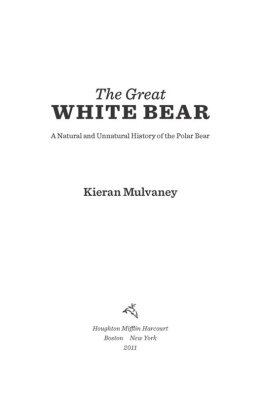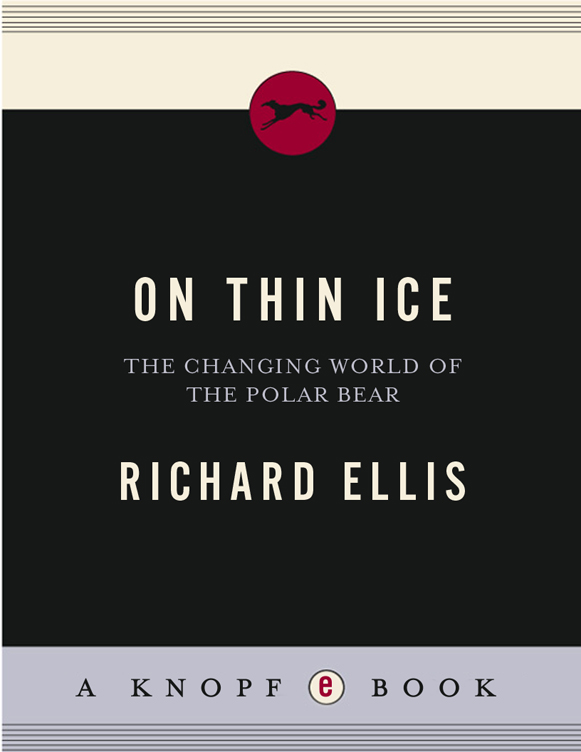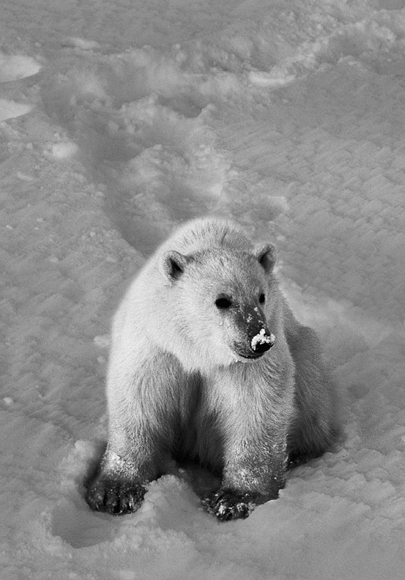Even as I speak, the very last polar bear may be dying of hunger on account of climate change, on account of us. And I will sure miss the polar bears. Their babies are so warm and cuddly and trusting, just like ours.
I
Introduction
I t was about 6:00 a.m. on July 18, 1994. I was in my little cabin aboard the Russian icebreaker Kapitan Dranitsyn, heading for the North Pole. I was a lecturer representing the American Museum of Natural History, to talk to the paying guests about Arctic mammalian wildlife, including seals, whales, walruses, and whatever else showed up. Franois Vuilleumier, the Swiss-born AMNH curator of ornithology, would identify and discuss the various gulls, terns, jaegers, and geese that we encountered en route. Our AMNH group shared the expedition with one from Harvards Museum of Comparative Zoology, led by the museums director, Jim McCarthy. An announcement came over the PA system that a polar bear is close to the ship. As I rushed to get dressedwe were near the North Pole, and running out in a T-shirt and shorts was not an optionI thought about how extraordinary this was. We had already spotted a couple of polar bears, but they were so far away, and white against a backdrop of snow and ice, that it was usually a case of: There over that little ridge no, not that one, the bluish one with the pile of ice in front of it see that white thing moving thats the bear. I was wearing a parka, snow pants, and boots, and Id stuffed five rolls of film in my pockets for my Minolta 35mm camera with a 35/300 zoom lens. The cabins on the Dranitsyn were stacked below the bridge in the forward superstructuresomebody once described the 434-foot-long icebreaker as a block of flats on a bargeso getting to the foredeck required hustling down five flights of stairs. I reached the foredeck level, opened the door, and got smacked in the face by the early-morning Arctic cold.
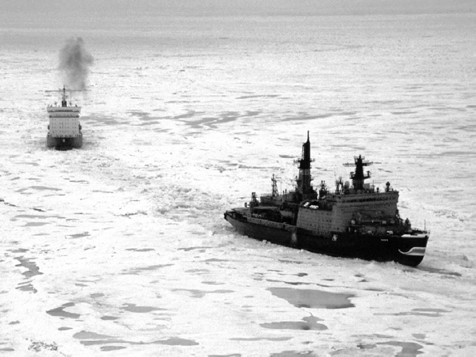
The Russian nuclear icebreaker Yamal leads Kapitan Dranitsyn toward the North Pole, July 1994.
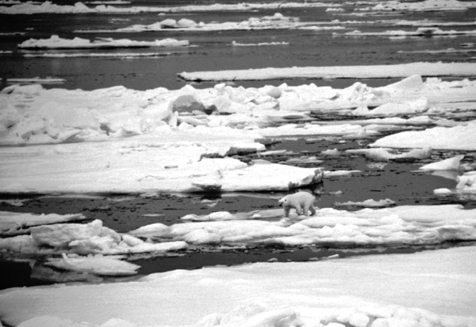
From the deck of a ship, polar bears are most often seen at a distance, making their way across the frozen landscape.
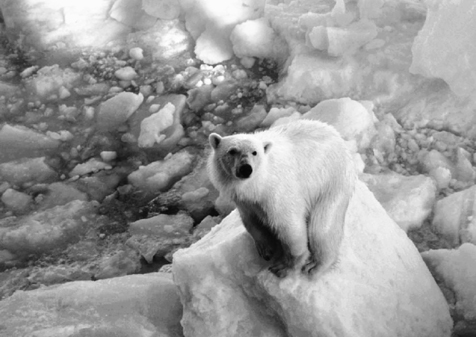
Standing on his hind legs, waiting for crewmen to throw him another slice of bread, was a full-grown polar bear.
As I stepped out on deck, I saw nothing but ice, a vast white landscape interrupted only by an occasional flash of pale aquamarine where the ice had broken, cracked, or melted. Where two rafts had come together, pressure ridges formed into crumbled mounds of broken ice that rose above the otherwise colorless, water-level landscape. The sky mirrored the cold, dull monochrome of the icy plain surrounding us. A large group of people were clustered at the forward port rail, obviously looking at something. I pushed my way to the rail and looked down. Standing on the ice on his hind legs, waiting for crewmen to throw him another slice of bread, was a full-grown polar bear.
We had just left Franz Josef Land, an unoccupied archipelago in the northeastern Barents Sea, north of Novaya Zemlya, and 600 miles from the North Pole. In 1872, the Austrian explorers Karl Weyprecht and Julius Payer, seeking the Northeast Passage in the Admiral Tegetthoff, became trapped in the pack ice at Novaya Zemlya and drifted for a year, finally finding land in August 1873. (A replica of the Tegetthoff, built by an Austrian film crew and then abandoned, remains on the ice, a skeletal contrast to the rumbling behemoths in which we were heading for the pole.) Weyprecht and Payer had accidentally discovered a previously unknown group of islands, which they named Franz Josef Land after their emperor. After spending a year exploring the islands, they abandoned their ship and journeyed in a small boat for ninety-six days to Novaya Zemlya. Fridtjof Nansen tried to reach the pole in 1893 by drifting in the specially reinforced Fram, but when he found himself heading in the wrong direction, he left the ship with Hjalmar Johansen and attempted to reach his goal by sledge. They had to turn back, and spent the winter of 1896 in a stone hut with a walrus-skin roof on Franz Josef Land. During his three-year stay, Nansen became the first man to map this complicated collection of islands. In 1926 Franz Josef Land was annexed by the Soviet Union, and remote weather stations were erected.
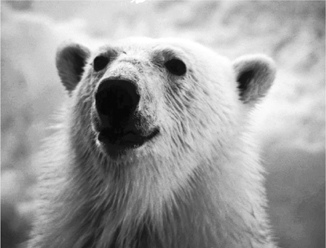
To this day, I cannot figure out how I got this shot. I was looking straight down on the bear from at least twenty feet.
When the bear got tired of the breador more likely, when the crewmen got tired of throwing ithe resumed his normal all-fours position and began to circle the ship. We were on the foredeck, some thirty feet above the bear, so he paid no attention to us, just walking slowly, swinging his head, and sniffing the ice. As he changed his position, the angle of the light also changed, so our photographs would appear to show any number of different bears walking in any number of different landscapes, but in fact there was only one bear. After about half an hour, he lost interest and wandered off, which gave us a great opportunity to photograph a polar bear from the rear. As we watched the bear depart, we realized that we had just had a rare and wonderful experience: we had seen one of natures most spectacular predators; we were able to photograph a dangerous wild animal at absolutely no risk. (At other times on this voyage, when we stoppedor were stopped by the iceand took a walk, we were always accompanied by a Russian sailor with a rifle.)
